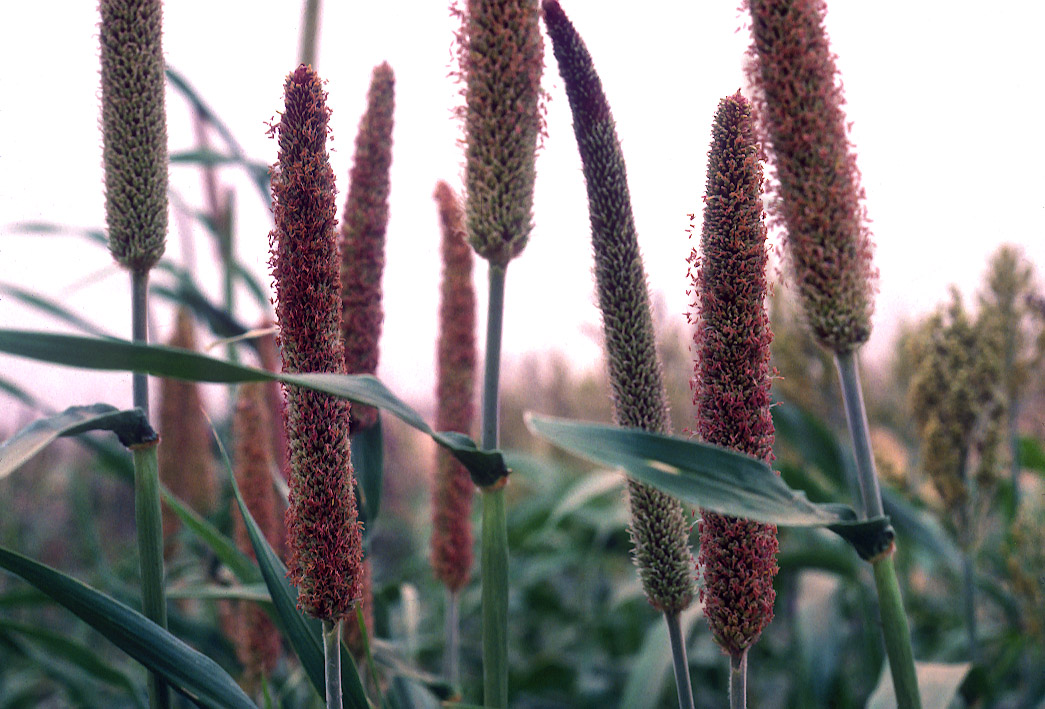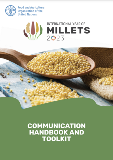"Millets can help to overcome food scarcity in difficult periods, contributing to the food security and nutrition of vulnerable populations."
Interview with Fenton Beed, FAO Senior Agricultural Officer, Rural and Urban Crop Systems.

FAO is celebrating the International Year of Millets to promote the sustainable production of these crops while highlighting their potential to provide new sustainable market opportunities for producers and consumers.
©FAO/Jeanette Van Acker
Rome – The International Year of Millets 2023 is an opportunity to raise awareness of the multiple benefits of millets, from nutrition and health to environmental sustainability and economic development. The Food and Agriculture Organization of the United Nations (FAO) is taking the lead in celebrating the Year in collaboration with other relevant stakeholders.
Fenton Beed, FAO Senior Agricultural Officer, Rural and Urban Crop Systems, answers some key questions about why production of millets is important, their nutritional properties, their resilience in adapting to climate change and their potential in contributing to food security.
Can you tell us a bit about millets and their characteristics?
“Millets” is a general term used for a wide range of cereals that produce small grains (seeds) from taxonomically divergent species of grasses. The various millets species differ in their physical characteristics, quality attributes, soil and climatic requirements and growth duration.
What are the different types of millets and where are they traditionally grown?
Millet species include pearl, proso, foxtail, barnyard, little, kodo, browntop, finger and guinea millets, black and white fonio, sorghum, teff and Job’s tears, as well as many other diverse and local species. Millets are cultivated primarily on marginal lands in dry areas in temperate, subtropical and tropical regions. They were among the first domesticated plants and remain as traditional staple crops for millions in Sub-Saharan Africa, South and East Asia, and are cultivated by a diversity of different cultures, including Indigenous Peoples.
What is the nutritional value of millets? How do they contribute to healthy and balanced diets?
As part of healthy diets, millets can contribute to food security and improved nutrition by serving as an affordable source of key nutrients and prevention of non-communicable disease, such as diabetes and high blood pressure. Indeed, they are sources of carbohydrate, antioxidants, protein and minerals. They have higher nutritional contents, more fibre, lower gluten and glycaemic index compared to commonly consumed refined grains and cereals.
Why was there a need to have an International Year of Millets?
The International Year of Millets 2023 (IYM2023) was declared by the United Nations General Assembly in 2021. The original proposal was made by the Government of the Republic of India and supported by other countries through FAO’s governing bodies. The proposal was made in view of the 2030 Agenda for Sustainable Development and its Sustainable Development Goals targets, with an ultimate aim to eradicate poverty and hunger from around the world. IYM2023 provides an opportunity to raise awareness of, and direct policy attention to the nutritional and health benefits of millets and their suitability for cultivation under adverse and changing climatic conditions. Moreover, IYM2023 helps to give attention to these small-grained dryland cereals, which can contribute to decent jobs on- and off- farm and food security and nutrition for all.
Why is it important to focus on production of millets?
Increasing production and developing value chains for millets can improve the diversity of the agrifood system, while bringing income potential and innovation to rural communities around the world, as well as food and nutrition security. Productivity is currently limited and there is significant room for improvement through genetic and agronomic improvements.
How can millets improve the current global agrifood systems particularly in terms of climate change and sustainability?
Droughts are affecting more and more people around the world. Millets can thrive on poor soils, resist or tolerate many crop diseases and pests, and are resilient to adverse climatic conditions. They can grow with minimal inputs, and by providing land cover in arid areas, they reduce further soil degradation and help support biodiversity and sustainable land restoration. Millets can help to overcome food scarcity in difficult periods, contributing to the food security and nutrition of vulnerable populations.
What are the ways in which FAO is supporting the production of millets?
Governments and policy makers are requested to prioritize sustainable production and consumption of millets as a way to fight hunger, build resilience to climate change, increase biodiversity, and promote a diverse diet. FAO encourages them to take policy and legislative actions that promote the cultivation of millets and support research and development, including innovative methods for harvest and post-harvest processes.
The private sector is also called to facilitate access to credit or other financial support, millet-specific training, farming equipment, and new technologies that improve the handling (harvest and post-harvest processing) of millets and thus their quality. We will take the opportunity of IYM2023 to take stock of the millets production and consumption around the world, identifying gaps and opportunities for research and development.
To encourage consumption of millets, FAO launched a Global Chefs Challenge on social media, where chefs and hobby cooks can share millets-based recipes with the global audience. Selected recipes featured in a Millets Cook/Recipe Book (approved by IYM Steering Committee, with official launch in pdf and html version in all UN languages for 18 October 2023 during WFF event). A background document on millets and their current challenges and opportunities: ''Unleashing the Potential of Millets'' includes a synopsis of the current status of millets around the world and was created to inspire policymakers, farmers, civil society, opinion leaders, research and development agents and the general public to reconsider the role of millets in diversified and nutritious diets. The document to be published in all UN languages and announced with press release on 1 September.
The IYM2023 Secretariat is supporting various national, regional and international celebrations of the IYM all around the world providing communication and technical expertise. To raise awareness of the benefits of millets within specialized audience and as legacy of IYM, the Secretariat is organizing a Global Webinar Series. Moreover, FAO will launch an IYM Photo contest inviting people to submit their best photos of millets.
In the long term, what does FAO hope to achieve through IYM 2023?
IYM2023 aims to raise awareness of the multiple benefits of millets, including social, economic, environmental and nutritional aspects; shed light on the opportunities for women, Indigenous Peoples, youth, farmers and other actors involved in the value chain. The Year will strengthen science-policy interaction, facilitate partnerships, mobilize stakeholders to take action on promoting and producing millets, and encourage consumption of millets by the general public. The IYM aims to contribute to SDG2 (zero hunger), SDG3 (good health and well-being, SDG5 (gender equality) SDG8 (decent work and economic growth), SDG13 (climate action), SDG12 (responsible consumption and production) and SDG 15 (life on land). Finally, the IYM 2023 is an opportunity to highlight the benefits of millets for Better production, Better Nutrition, a Better Environment and a Better Life, leaving no one behind. We also hope to contribute towards documenting available genetic resources and biodiversity in millets-based production systems and preserve traditions and cultures surrounding millets around the world.

